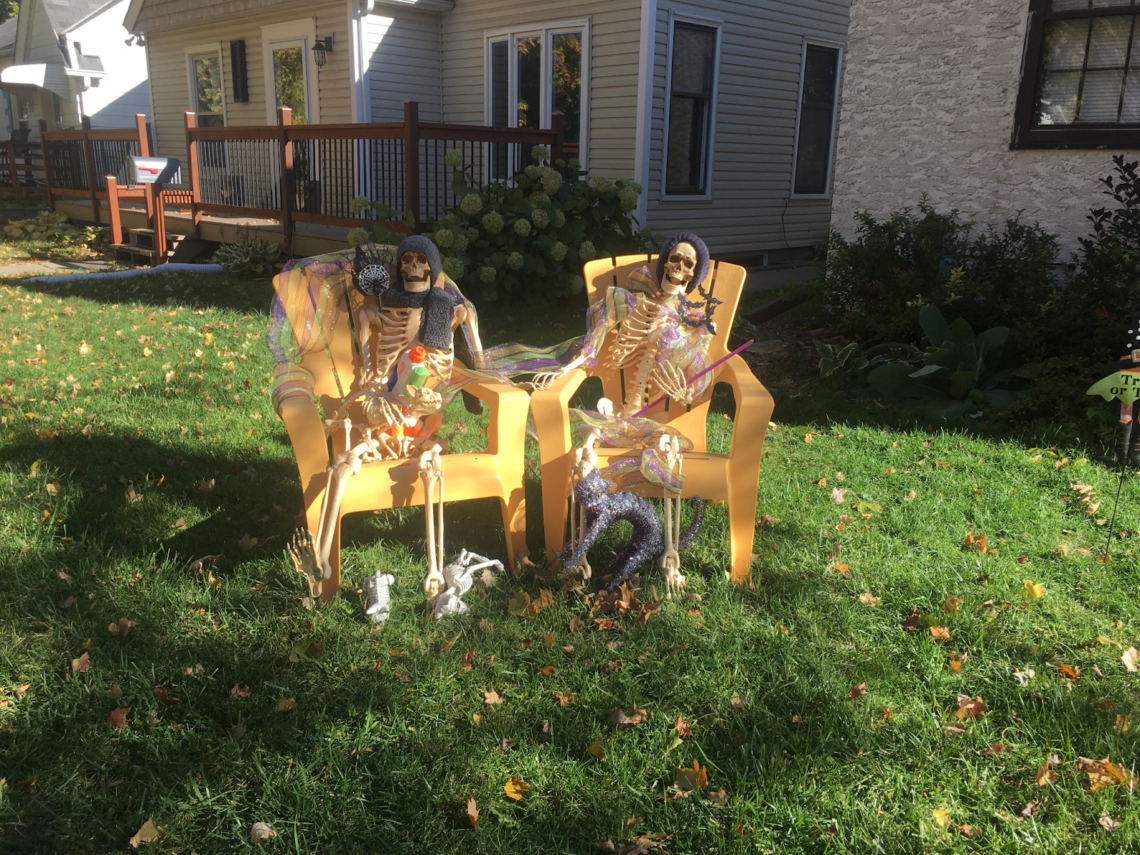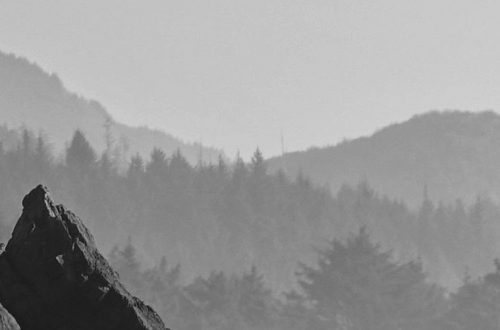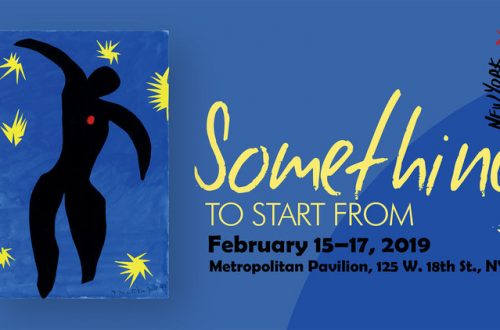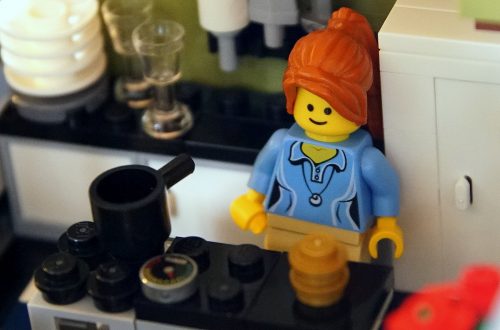by Abbey von Gohren
But see, there is joy and revelry,
slaughtering of cattle and killing of sheep,
eating of meat and drinking of wine!
“Let us eat and drink,” you say,
“for tomorrow we die!” Isaiah 12:13
My first reaction when I started seeing skeletons in lawn chairs with brash, wide-mouthed grins, sunglasses and drinks perched between their bony fingers was mostly amusement at the whimsy. Indeed, the entire month of October is usually a decorating free-for-all in much of my Minneapolis neighborhood, with pumpkins on my front stoop, towering skeletons leaning casually on house rooflines, the downright goofy “Happy Halloweiner” dog, and yards littered with macabre, horror-film-esque scenes. I chuckle at the quirky decor with my kids – and a kindred spirit writing over at Mere Orthodoxy has given me good reason to use Halloween decor to mock death, since the Christian’s most formidable enemy has been defeated. As I laugh – at them, at myself, at all of us – I feel a sort of kinship with the sanguine skeletons in beanies and Adirondack chairs, as if they were new neighbors kicking back after a long day of moving.
But what new neighbors! Elaborate graveyard scenes with tombstones and burials seem to be especially popular this year, and I started wondering why. Is it possible that our mighty struggles with COVID in past years have put our mortality at the forefront of our minds? There is a dark and pain-filled side to all of the good-natured humor strewn here across our lawns. Not only do I laugh; I remember my own death. I wonder whether my neighbors (the flesh-and-blood ones erecting these elaborate scenes) are consciously choosing this memento mori or is it more of a subconscious cathartic, like the way that the excesses of carnival in the middle ages gave people a chance to blow off steam, especially after an epidemic? Whatever the motive, these funky lawn decorations have a curious way of pointing to our common end. These figures kick back with their (empty) beer cans, seemingly oblivious to the most obvious and stark reality that they are dead. Here is fleshy enjoyment minus the flesh, cups minus the flowing drink, eye-sockets empty of recognition.
In George MacDonald’s 19th-century proto-fantasy novel Lilith, Vane (the narrator) takes a bizarre and wonder-filled trip through worlds where he meets characters dead, alive, or sometimes confoundedly in-between. One such scene is about halfway through the journey, when Vane stumbles upon a danse macabre in the half-light of shadows cast by the moon:
At first I could distinguish almost nothing of the faces of the multitude; I could not fail, however, to perceive that there was something odd about them: I sat up to see them better.–Heavens! could I call them faces? They were skull fronts! –hard, gleaming bone, bare jaws, truncated noses, lipless teeth which could no more take part in any smile! Of these, some flashed set and white and murderous; others were clouded with decay, broken and gapped, coloured of the earth in which they seemed so long to have lain! Fearfuller yet, the eye-sockets were not empty; in each was a lidless living eye! In those wrecks of faces, glowed or flashed or sparkled eyes of every colour, shape, and expression. The beautiful, proud eye, dark and lustrous, condescending to whatever it rested upon, was the more terrible; the lovely, languishing eye, the more repulsive; while the dim, sad eyes, less at variance with their setting, were sad exceedingly, and drew the heart in spite of the horror out of which they gazed.
Despite the low light, Vane is able to distinguish three main types of people: the proud and beautiful, the lovely and languishing, and the dim and sad. (Wouldn’t it be something to use these categories to parse out types of seasonal lawn ornaments!) While he is trying to figure out who these characters are, Vane spots another figure overlooking the crowd:
Every eye turned to the same spot:–in the doorway stood a woman, perfect in form, in holding, and in hue, regarding the company as from the pedestal of a goddess, while the dancers stood “like one forbid,” frozen to a new death by the vision of a life that killed. “Dead things, I live!” said her scornful glance. Then, at once, like leaves in which an instant wind awakes, they turned each to another, and broke afresh into melodious consorted motion, a new expression in their eyes, late solitary, now filled with the interchange of a common triumph. “Thou also,” they seemed to say, “wilt soon become weak as we! thou wilt soon become like unto us!”
Though this woman looks on disdainfully at the pathetic beings with their “wrecks of faces” playing out their eternal dance at her whim, she is fatally unaware of her own destiny. She seems powerfully able to command a kind of resurrection, but her invitation is empty, nothing more than a prodding to keep up a dance that is ephemeral, non-eternal, a parody of real life. She lives lightly, in willful ignorance, seemingly oblivious that she too will fall from her pedestal. She has a yard full of reminders about her own end, and yet does not seem to get the message: memento mori.
This brings to mind another woman who lives similarly, though perhaps with not quite as much pride (and possibly quite a bit more trauma): Jocasta, Oedipus’ wife. As Sophocles writes out the story, just when Oedipus is about to learn the tragic truth of who he is, Jocasta purrs: “Why should man fear since chance is all in all for him, and he can clearly foreknow nothing? Best to live lightly, as one can, unthinkingly.” I always imagine her saying this with a dead calm but seething anxiety beneath. “Best to live lightly,” a life mantra for anyone looking to hide from a hard truth or cocoon themselves away from their greatest fears and just continue the waltz in wilful pride or quiet desperation by turns.
When Isaiah the prophet brings up the phrase: “let us eat, drink and be merry, for tomorrow we die,” he is quoting the people of God who ignore Yahweh’s injunction to “to weep and to wail, to tear out your hair and put on sackcloth.” Instead of mourning, which would be a response commensurate to the state of their damaged souls, they are feasting. They have their seasons flipped around. Like Jocasta or the dancing skeletons, they are living lightly. There is a time to laugh, yes, but also a time to weep. Rather than remember their death, they would forget it.
But does it work? Are human beings actually capable of living unthinkingly as a response to pain? We currently have quite a few effective distractions to aid us in this aim, for example: the latest Hulu binge, food or drink, career, exercise, #goals, facebook scrolls, or any number of shallow social trades-in-kind. We can immerse ourselves in other things for a while, but as our instinct and 2000+ years of good literature will tell us, they do not ultimately fulfill us. Moreover, we gradually become alienated from ourselves and those around us, as C.S. Lewis famously pointed out in in the Four Loves:
To love at all is to be vulnerable. Love anything and your heart will be wrung and possibly broken. If you want to make sure of keeping it intact you must give it to no one, not even an animal. Wrap it carefully round with hobbies and little luxuries; avoid all entanglements. Lock it up safe in the casket or coffin of your selfishness. But in that casket, safe, dark, motionless, airless, it will change. It will not be broken; it will become unbreakable, impenetrable, irredeemable.
By implication, the only way to avoid the fate of a calcified heart then is to love. Rather than escaping the pain by living unthinkingly, we can face the music and give our heart away. Returning to Vane in the story of Lilith, he continues to gaze on the pitiful dancers when a warm wind blows through the place, and the figures are transfigured in a sense:
As if each shape had been but a snow-image, it began to fall to pieces, ruining in the warm wind. In papery flakes the flesh peeled from its bones, dropping like soiled snow from under its garments; these fell fluttering in rags and strips, and the whole white skeleton, emerging from garment and flesh together, stood bare and lank amid the decay that littered the floor. A faint rattling shiver went through the naked company; pair after pair the lamping eyes went out; and the darkness grew round me with the loneliness. For a moment the leaves were still swept fluttering all one way; then the wind ceased, and the owl floated silent through the silent night.
It’s an eerie end, their eyes snuffed out, but truer to reality. Rather than moving in a contradance of untruth, the warm wind blows through and gives their bones the dignity of sleep.
Now that All Hallow’s Eve, All Saints’ Day and All Souls’ Day have come and gone, my neighbors and I will abandon our pumpkins to the squirrels and decay of autumn. We will recycle the construction paper decorations in the window and pack up the skeletons into the closet. But rather than forgetting pain or fooling ourselves into silliness, perhaps there is a holy admixture of laughter and mourning, a way to remember our own end through these earthly and earthy rituals. Remember your death! – they might say – look to the dignity of rest! And most of all – the hope of a future resurrection.
George MacDonald’s Lilith proves to be marvelous reading for this time of year… You can find a copy of it for free here.

Abbey enjoys the turning of seasons in her home state of Minnesota, where her days are filled to the brim with writing, editing, mothering and teaching.





